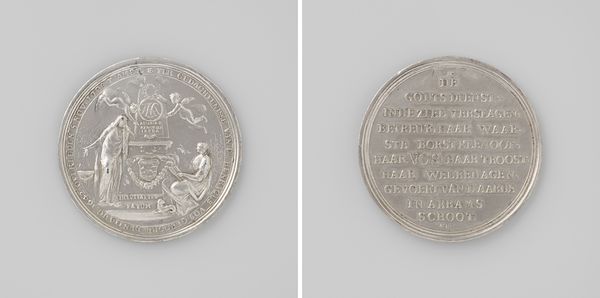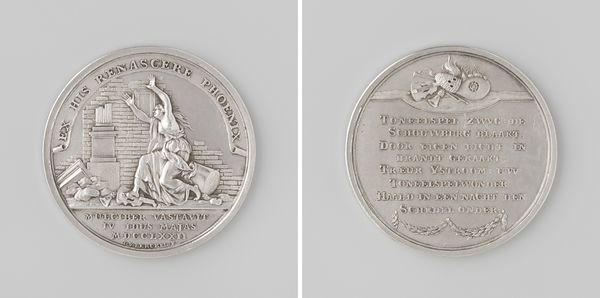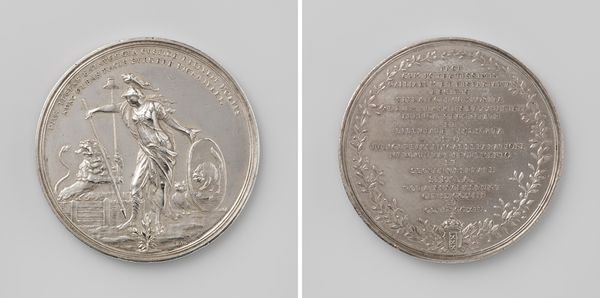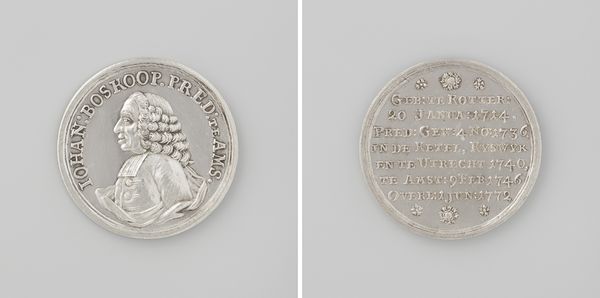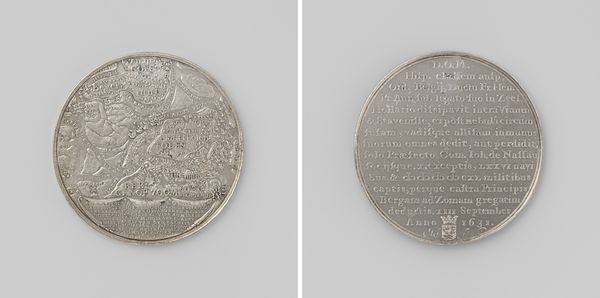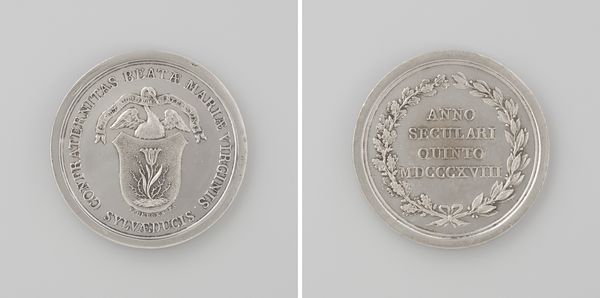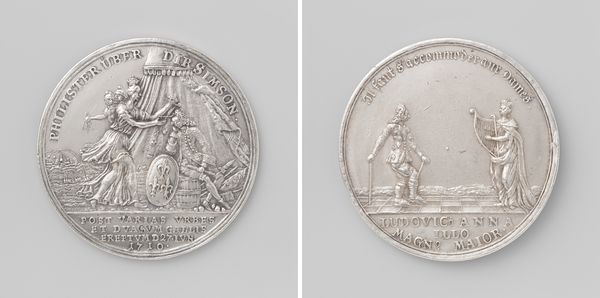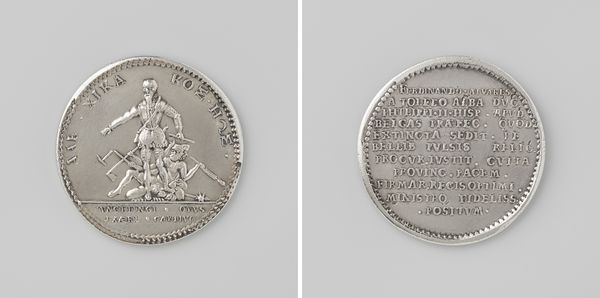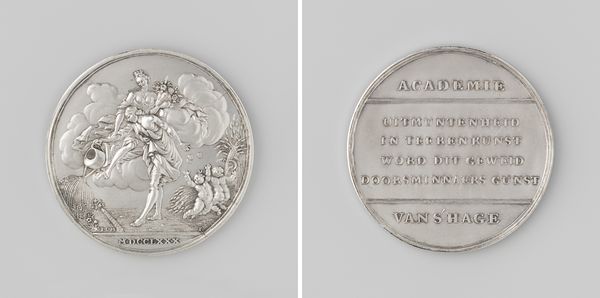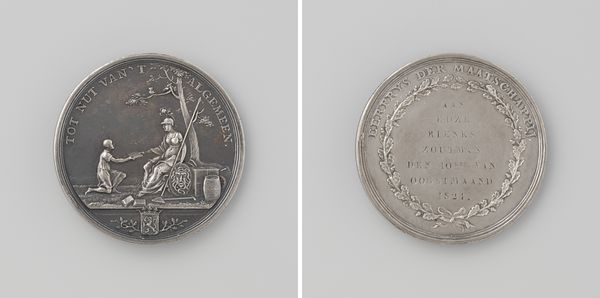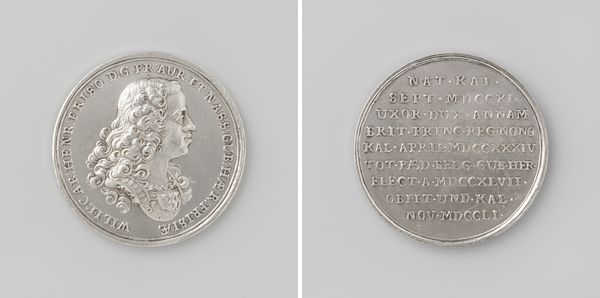
Vrede van Utrecht en overeenkomsten, gesloten te Antwerpen tussen Republiek, Keizer en Engeland betreffende de grensscheidingen in Brabant. Penning geslagen op last van de stad Gouda 1716
0:00
0:00
metal, sculpture
#
allegory
#
baroque
#
metal
#
sculpture
#
history-painting
Dimensions: diameter 7.3 cm, weight 123.85 gr
Copyright: Rijks Museum: Open Domain
Curator: Here we have a fascinating commemorative medal dating back to 1716, created by Johannes Drappentier. The medal, crafted from metal, specifically references "Vrede van Utrecht en overeenkomsten, gesloten te Antwerpen tussen Republiek, Keizer en Engeland betreffende de grensscheidingen in Brabant," or the peace of Utrecht and agreements related to border demarcations in Brabant. It was commissioned by the city of Gouda. Editor: It feels very classical to me, like something out of ancient Greece or Rome with that goddess-like figure and that reclining man. What strikes me most is how incredibly detailed the engraving is—remarkably precise, particularly given the scale of the medal itself. Curator: Yes, Drappentier’s skills are certainly on display. The use of metal here, likely silver, is noteworthy, functioning both as a medium for intricate sculpting and as a symbolic reflection of wealth and civic pride, showcasing Gouda's role. Editor: You can almost feel the weight of historical agreements and political maneuverings in that dense allegory. I'm immediately drawn to the two figures. Is that an allegory of peace, bestowing gifts and benefits onto the male figure on the left, representing perhaps Brabant, now enjoying freedom from war. That feels right. The symbolism highlights the power dynamics inherent in peace treaties, even today. Curator: Absolutely, you have captured it well. And the architecture depicted in the background grounds it. I believe it depicts scenes relevant to the cities in question, framing the central allegory with the real-world context that drove this treaty, perhaps alluding to benefits derived via improved trade relations? Editor: The choice to cast such an event in allegorical form seems intended to lend a sense of timelessness, an attempt to write Gouda and Brabant into the grand narrative of European history and project an air of legitimacy and permanence for this "peace". Curator: Exactly. And from a material perspective, medals like these were circulated not just as commemorations but also as tools of soft power. Consider the labor, the skill needed, it elevated those capable to create this kind of detailed material item. The crafting of it, even today, offers a message of strength and accomplishment to anyone who holds it. Editor: Definitely food for thought. Seeing these historical events reflected in a tangible object is compelling and really drives home how crafted items can carry significant narratives. Curator: It certainly makes one consider how we materially represent our own pivotal historical junctures today, or whether such crafted items might carry the risk of losing its significance over time.
Comments
No comments
Be the first to comment and join the conversation on the ultimate creative platform.
